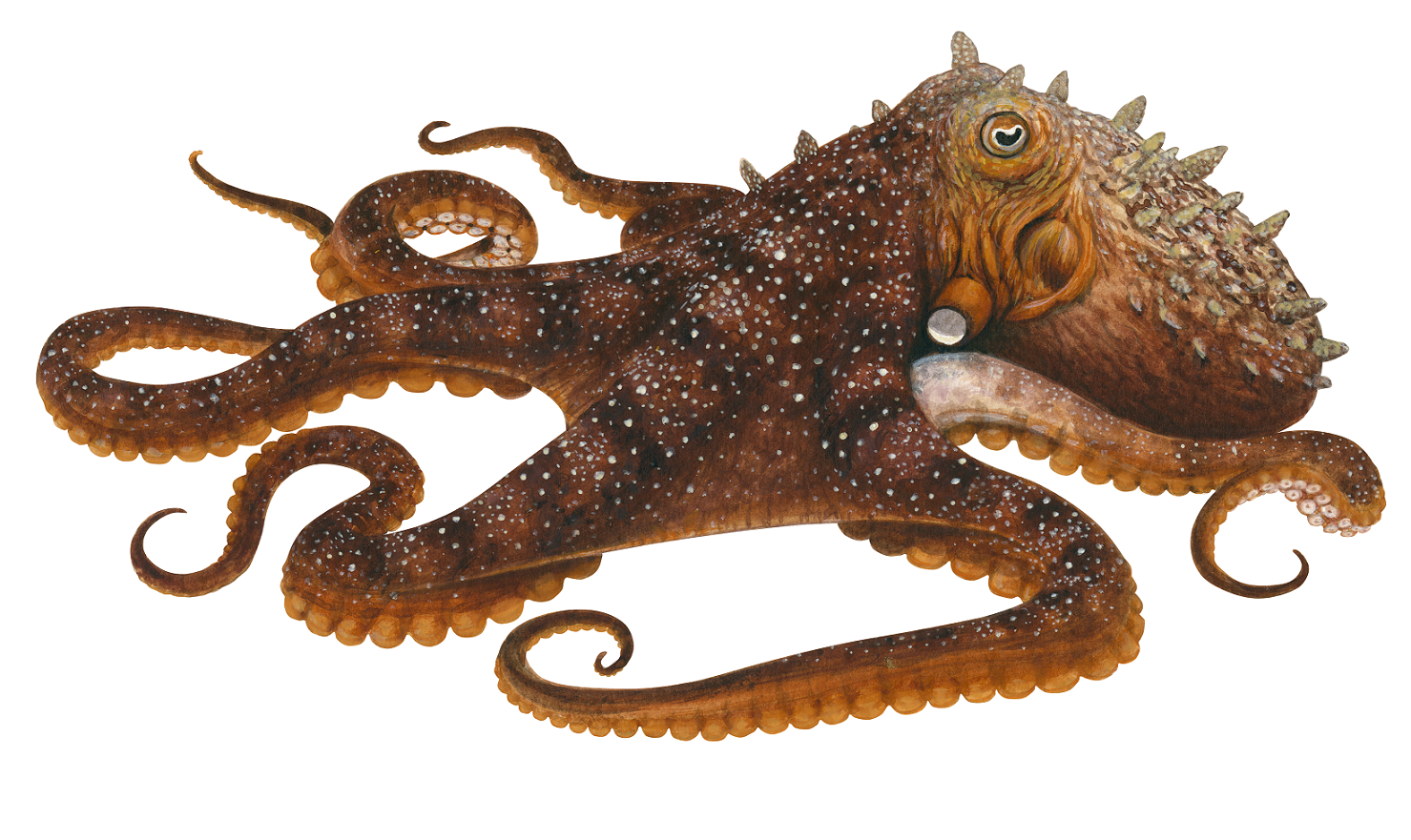Māori Octopus Biology

| Habitat | Rocky reefs, beds of seagrass or seaweeds, sand down to 549 m. | Norman (2000); Edgar (2008) |
| Distribution | Temperate and sub-Antarctic waters of New Zealand and southern Australia. | Stranks (1996) |
| Diet | Crustaceans (crabs, lobsters), fish, shellfish (abalone, mussels) and other octopuses. | Norman (2000) |
| Movement and Stock Structure | Several genetically distinct populations. At least two populations in Tasmania: north-east Tasmanian population and south-west Tasmanian populations (which extends to South Australia). Adults of the species aggregate all year-round in Eaglehawk Bay on the Tasman Peninsula. | Doubleday et al. (2009) |
| Natural Mortality | Undefined. | |
| Maximum Age | Maximum of 7.3 months from ageing study but lifespan potentially up to 3 years. | Doubleday et al. (2011); Grubert and Wadley (2000) |
| Growth | Max weight: 15 kg. Growth equation undefined. | Stranks (1996) |
| Maturity | Size-at-50% maturity undefined. Female mature between 0.6 to 1 kg. Weight-specific fecundity range from 6.82 to 27.70 eggs/gram body. Mating activity is independent of female maturity. | Grubert and Wadley (2000) |
| Reproductive biology | Semelparous (i.e. reproduces only once before dying). Spawning season: spring-summer in New Zealand but appear to mate and lay all year round in Tasmania. Moderate fecundity (5000 – 7000 eggs); egg length 6.5 – 7.5mm. Benthic eggs with active brooding by females. Planktonic hatchlings ~5 mm length. | Anderson (1999) |



